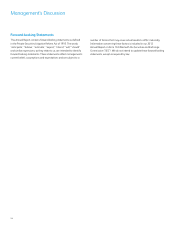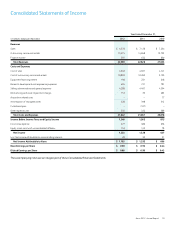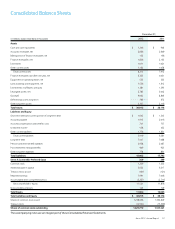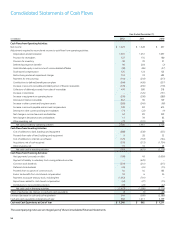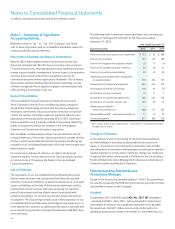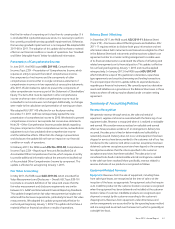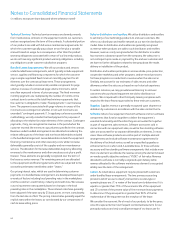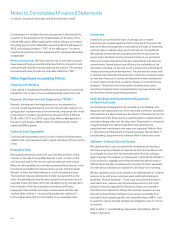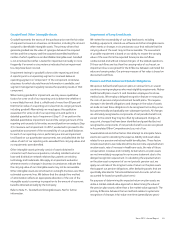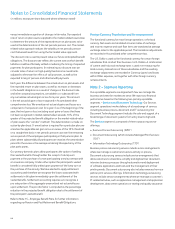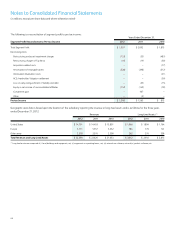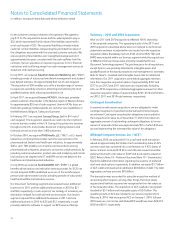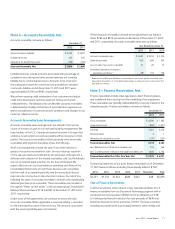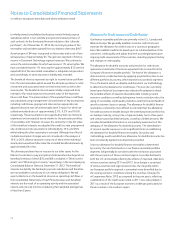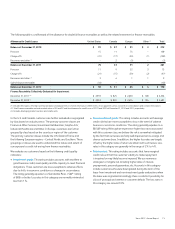Xerox 2012 Annual Report Download - page 66
Download and view the complete annual report
Please find page 66 of the 2012 Xerox annual report below. You can navigate through the pages in the report by either clicking on the pages listed below, or by using the keyword search tool below to find specific information within the annual report.Notes to Consolidated Financial Statements
(in millions, except per-share data and where otherwise noted)
64
Consideration in a multiple-element arrangement is allocated at the
inception of the arrangement to all deliverables on the basis of the
relative selling price. When applying the relative selling price method,
the selling price for each deliverable is primarily determined based on
VSOE or third-party evidence (“TPE”) of the selling price. The above
noted revenue policies are then applied to each separated deliverable,
as applicable.
Revenue-based taxes: We report revenue net of any revenue-based
taxes assessed by governmental authorities that are imposed on and
concurrent with specific revenue-producing transactions. The primary
revenue-based taxes are sales tax and value-added tax (“VAT”).
Other Significant Accounting Policies
Shipping and Handling
Costs related to shipping and handling are recognized as incurred and
included in Cost of sales in the Consolidated Statements of Income.
Research, Development and Engineering (“RD&E”)
Research, development and engineering costs are expensed as
incurred. Sustaining engineering costs are incurred with respect to on-
going product improvements or environmental compliance after initial
product launch. Sustaining engineering costs were $110, $108 and
$128 in 2012, 2011 and 2010, respectively. Refer to Management’s
Discussion and Analysis, RD&E section for additional information
regarding RD&E expense.
Cash and Cash Equivalents
Cash and cash equivalents consist of cash on hand, including money
market funds, and investments with original maturities of three months
or less.
Receivable Sales
We regularly sell certain portions of our receivable portfolios. Gains
or losses on the sale of receivables depend, in part, on both (a) the
cash proceeds and (b) the net non-cash proceeds received or paid.
When we sell receivables we normally receive beneficial interests in the
transferred receivables from the purchasers as part of the proceeds.
We refer to these beneficial interests as a deferred purchase price.
The beneficial interests obtained are initially measured at their fair
value. We generally estimate fair value based on the present value of
expected future cash flows, which are calculated using management’s
best estimates of the key assumptions including credit losses,
prepayment rate and discount rates commensurate with the risks
involved. Refer to Note 4 – Accounts Receivable, Net and Note 5 –
Finance Receivables, Net for more details on our receivable sales.
Inventories
Inventories are carried at the lower of average cost or market.
Inventories also include equipment that is returned at the end of the
lease term. Returned equipment is recorded at the lower of remaining
net book value or salvage value, which normally are not significant.
We regularly review inventory quantities and record a provision for
excess and/or obsolete inventory based primarily on our estimated
forecast of product demand, production requirements and servicing
commitments. Several factors may influence the realizability of our
inventories, including our decision to exit a product line, technological
changes and new product development. The provision for excess and/
or obsolete raw materials and equipment inventories is based primarily
on near term forecasts of product demand and include consideration
of new product introductions, as well as changes in remanufacturing
strategies. The provision for excess and/or obsolete service parts
inventory is based primarily on projected servicing requirements over
the life of the related equipment populations.
Land, Buildings and Equipment and Equipment
on Operating Leases
Land, buildings and equipment are recorded at cost. Buildings and
equipment are depreciated over their estimated useful lives. Leasehold
improvements are depreciated over the shorter of the lease term or the
estimated useful life. Equipment on operating leases is depreciated to
estimated salvage value over the lease term. Depreciation is computed
using the straight-line method. Significant improvements are
capitalized and maintenance and repairs are expensed. Refer to Note
6 – Inventories and Equipment on Operating Leases, Net and Note 7 –
Land, Buildings, Equipment and Software, Net for further discussion.
Software – Internal Use and Product
We capitalize direct costs associated with developing, purchasing or
otherwise acquiring software for internal use and amortize these costs
on a straight-line basis over the expected useful life of the software,
beginning when the software is implemented (“Internal Use Software”).
Costs incurred for upgrades and enhancements that will not result in
additional functionality are expensed as incurred. Amounts expended
for Internal Use Software are included in Cash Flows from Investing.
We also capitalize certain costs related to the development of software
solutions to be sold to our customers upon reaching technological
feasibility (“Product Software”). These costs are amortized based on
estimated future revenues over the estimated economic life of the
software. Amounts expended for Product Software are included in
Cash Flows from Operations. We perform periodic reviews to ensure
that unamortized Product Software costs remain recoverable from
estimated future operating profits (net realizable value or NRV). Costs
to support or service licensed software are charged to costs of services
as incurred.
Refer to Note 7 – Land, Buildings, Equipment and Software, Net for
further information.


